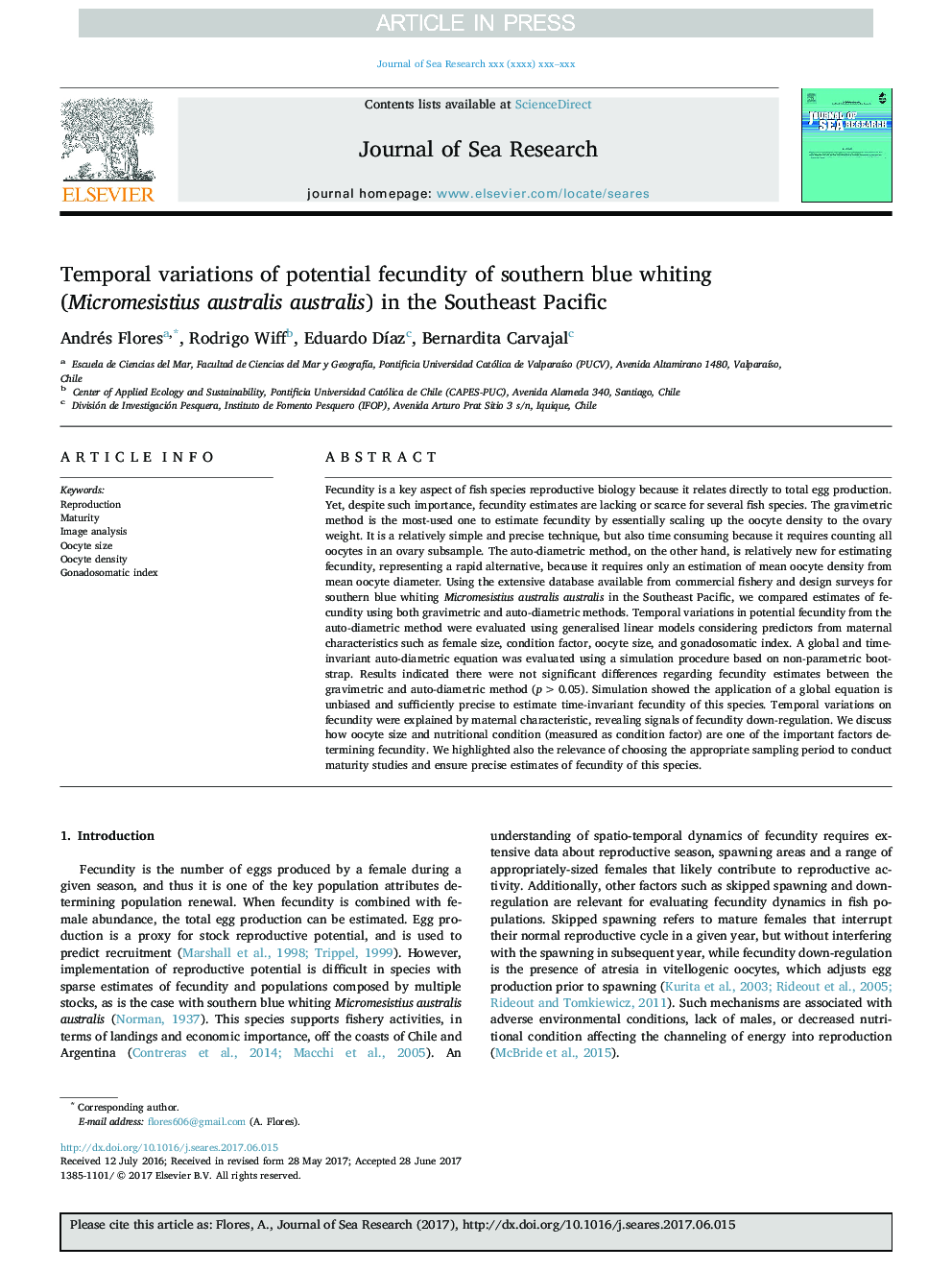| کد مقاله | کد نشریه | سال انتشار | مقاله انگلیسی | نسخه تمام متن |
|---|---|---|---|---|
| 5766046 | 1627449 | 2017 | 11 صفحه PDF | دانلود رایگان |
عنوان انگلیسی مقاله ISI
Temporal variations of potential fecundity of southern blue whiting (Micromesistius australis australis) in the Southeast Pacific
دانلود مقاله + سفارش ترجمه
دانلود مقاله ISI انگلیسی
رایگان برای ایرانیان
کلمات کلیدی
موضوعات مرتبط
مهندسی و علوم پایه
علوم زمین و سیارات
اقیانوس شناسی
پیش نمایش صفحه اول مقاله

چکیده انگلیسی
Fecundity is a key aspect of fish species reproductive biology because it relates directly to total egg production. Yet, despite such importance, fecundity estimates are lacking or scarce for several fish species. The gravimetric method is the most-used one to estimate fecundity by essentially scaling up the oocyte density to the ovary weight. It is a relatively simple and precise technique, but also time consuming because it requires counting all oocytes in an ovary subsample. The auto-diametric method, on the other hand, is relatively new for estimating fecundity, representing a rapid alternative, because it requires only an estimation of mean oocyte density from mean oocyte diameter. Using the extensive database available from commercial fishery and design surveys for southern blue whiting Micromesistius australis australis in the Southeast Pacific, we compared estimates of fecundity using both gravimetric and auto-diametric methods. Temporal variations in potential fecundity from the auto-diametric method were evaluated using generalised linear models considering predictors from maternal characteristics such as female size, condition factor, oocyte size, and gonadosomatic index. A global and time-invariant auto-diametric equation was evaluated using a simulation procedure based on non-parametric bootstrap. Results indicated there were not significant differences regarding fecundity estimates between the gravimetric and auto-diametric method (p > 0.05). Simulation showed the application of a global equation is unbiased and sufficiently precise to estimate time-invariant fecundity of this species. Temporal variations on fecundity were explained by maternal characteristic, revealing signals of fecundity down-regulation. We discuss how oocyte size and nutritional condition (measured as condition factor) are one of the important factors determining fecundity. We highlighted also the relevance of choosing the appropriate sampling period to conduct maturity studies and ensure precise estimates of fecundity of this species.
ناشر
Database: Elsevier - ScienceDirect (ساینس دایرکت)
Journal: Journal of Sea Research - Volume 126, August 2017, Pages 26-36
Journal: Journal of Sea Research - Volume 126, August 2017, Pages 26-36
نویسندگان
Andrés Flores, Rodrigo Wiff, Eduardo DÃaz, Bernardita Carvajal,